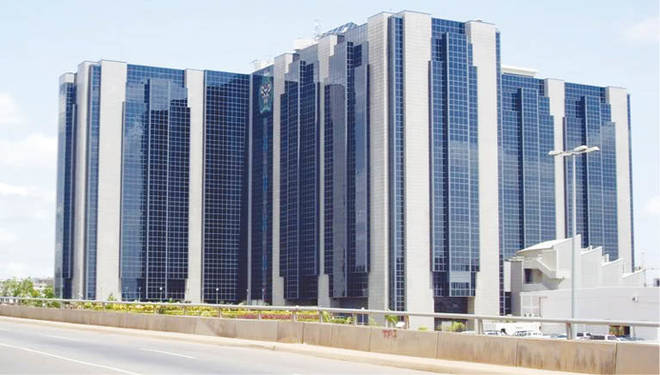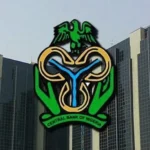The Central Bank of Nigeria (CBN) has released its half year 2018 (Jan to June) activity report 2018.
The report posted on its website showed that the Apex Bank has spent $9.499bn to defend the naira.
The report showed the sustained interventions by the CBN led to the naira stability during the period under review.
“A total of $9.499bn was sold at the foreign exchange market. This comprised $1.546bn at the inter-bank spot, $768.70 million for invisibles, $637.00 million for SMEs, $1.236bn at the I & E window, while forwards sales were $5.311bn.”
The report also noted that on “the other hand, the Bank purchased $6.436bn at the inter-bank market which resulted in a net sale of $3,063.44 million by the Bank. The sum of $5.681bn matured at the forwards segment, while $1.469bn was outstanding at end-June 2018” it said.
The foreign exchange market remained stable in the first half of 2018, traceable to the sustained salutary effects of the CBN foreign exchange policy measures adopted since June 2016. Some of these measures included moral suasion, as well as reduced selling rate, increased volume and frequency of foreign exchange sales to BDCs.
According to the report, in the corresponding period of 2017, $8. 105bn was sold at the inter-bank market, comprising $772.04 million at the inter-bank spot, $704.86 million for invisibles, $442.00 million for SMEs, $415.34 million at the I & E window, while forwards sales were $5.771bn .
On the other hand, the Bank purchased $1.031bn at the inter-bank market, resulting in a net sale of $7.073bn. The sum of $5.485bn matured at the forwards segment, while $1.988bn was outstanding at end-June 2017.
The CBN indicated that the increased transactions in 2018 were attributable to the Bank’s foreign exchange management strategy of sustaining liquidity in the market and maintaining exchange rate stability.
On open market operations auctions, the report said the “CBN Bills offered, subscribed to and sold at the open market amounted to N13,972.84 billion, N11,651.25 billion and N9,743.76 billion, respectively, compared with N3,702.96 billion, N4,593.89 billion and N3,874.27 billion, in the corresponding period of 2017.
It said “the high level of activity was attributable to sustained monthly disbursements to the three tiers of government by the Federation Accounts Allocation Committee (FAAC), high volume of CBN Bills maturities and the frequency of auctions.”
Consequently, it said the “cost of liquidity management rose to N848.32 billion, although moderated by the over 300 basis point decline in yields in the review period, compared to N577.46 billion in the corresponding period of 2017.
On federal government domestic debt he said “the total domestic debt outstanding at end-June, 2018 stood at N12,151.44 billion, representing an increase of N290.67 billion or 2.45 per cent, over N11,860.77 billion in the corresponding period of 2017.”
It said “the debt stock during the review period comprised FGN Bonds worth N8,927.66 billion or 73.47 per cent, Nigerian Treasury Bills (NTBs) worth N2,953.58 billion or 24.31 per cent and FRN Treasury Bonds of N150.99 billion or 1.24 per cent.”
“Others included FGN Sukuk worth N100.00 billion or 0.8 per cent, FGN Green Bond N10.69 billion or 0.09 per cent and FGN Saving Bonds of N8.52 billion or 0.07 per cent.”
“Consequently, the cost of servicing the debt grew by 37.04 per cent to N941.99 billion at end-June 2018, compared to N687.37 billion in the corresponding period of 2017” it said.
On liquidity management, the report indicated that the fiscal disbursements including Statutory Revenue Allocation (SRA), Value Added Tax (VAT) and government expenditure, amongst others, boosted the level of liquidity in the banking system. In addition, it said inflows from matured CBN Bills, other monetary operations and the redemption of FGN Bonds and Nigerian Treasury Bills (NTBs) complemented the fiscal injections.
The CBN noted that OMO remained the major tool for liquidity management and was complemented by discount window operations, CRR debits and interventions in the foreign exchange market.
“The challenge of curtailing inflation, promoting capital inflows and sustaining the economy on the path of growth was paramount to the attainment of the Bank’s policy objectives. In view of the contractionary monetary policy stance, the policy rates were retained at the same level as in the corresponding period of 2017” the report indicated.
Thus it said the MPR remained at 14.0 per cent, with an asymmetric corridor of +200/-500 basis points for the Standing Lending Facility (SLF) and Standing Deposit Facility (SDF), respectively. In addition, the CRR and liquidity ratios were unchanged at 22.50 and 30.00 per cent, respectively it said.
The CBN half year report also indicated that domestic money market rates responded to the trends in liquidity in the banking system adding that the interplay of demand and supply of funds by authorized dealers at the inter-bank market revealed preference for collateralized transactions, reflecting market players’ risk aversion.
It noted that the interest rates at the money market recorded some spikes in response to liquidity squeeze occasioned by Open Market Operations (OMO) auctions and sale of foreign exchange to the banks.
Nonetheless, fiscal disbursements, complemented by maturing OMO Bills, redemption of treasury bills and repurchase transactions constituted major sources of liquidity into the banking system.
According to the CBN actions taken by the various regulatory authorities impacted on the Nigerian financial markets and influenced the conduct of transactions. These included policies aimed at enhancing financial inclusion and payments system, providing new liquidity instruments for non-interest banks, deepening the capital and commodities markets and boosting liquidity in the foreign exchange market.
On CBN’s standing facilities, the report indicated that the banks accessed the CBN standing facilities to square-up their positions by either borrowing from the standing lending facilities (SLF) or depositing excess funds at the standing deposit facilities (SDF) at the end of each business day.
It said the trend in 2018 showed less recourse to the SLF in the first half, when compared with the corresponding period of 2017. “Meanwhile, the threshold for daily deposits per institution at the SDF remained N7.5 billion to curtail unbridled requests by market participants and encourage lending to the real economy. The applicable rates, which were anchored to the MPR, for the SLF and SDF, also remained 16.00 and 9.00 per cent, respectively, as in the corresponding period of 2017” it said.
Inside CBN’s 2018 half year report

 Join Daily Trust WhatsApp Community For Quick Access To News and Happenings Around You.
Join Daily Trust WhatsApp Community For Quick Access To News and Happenings Around You.

